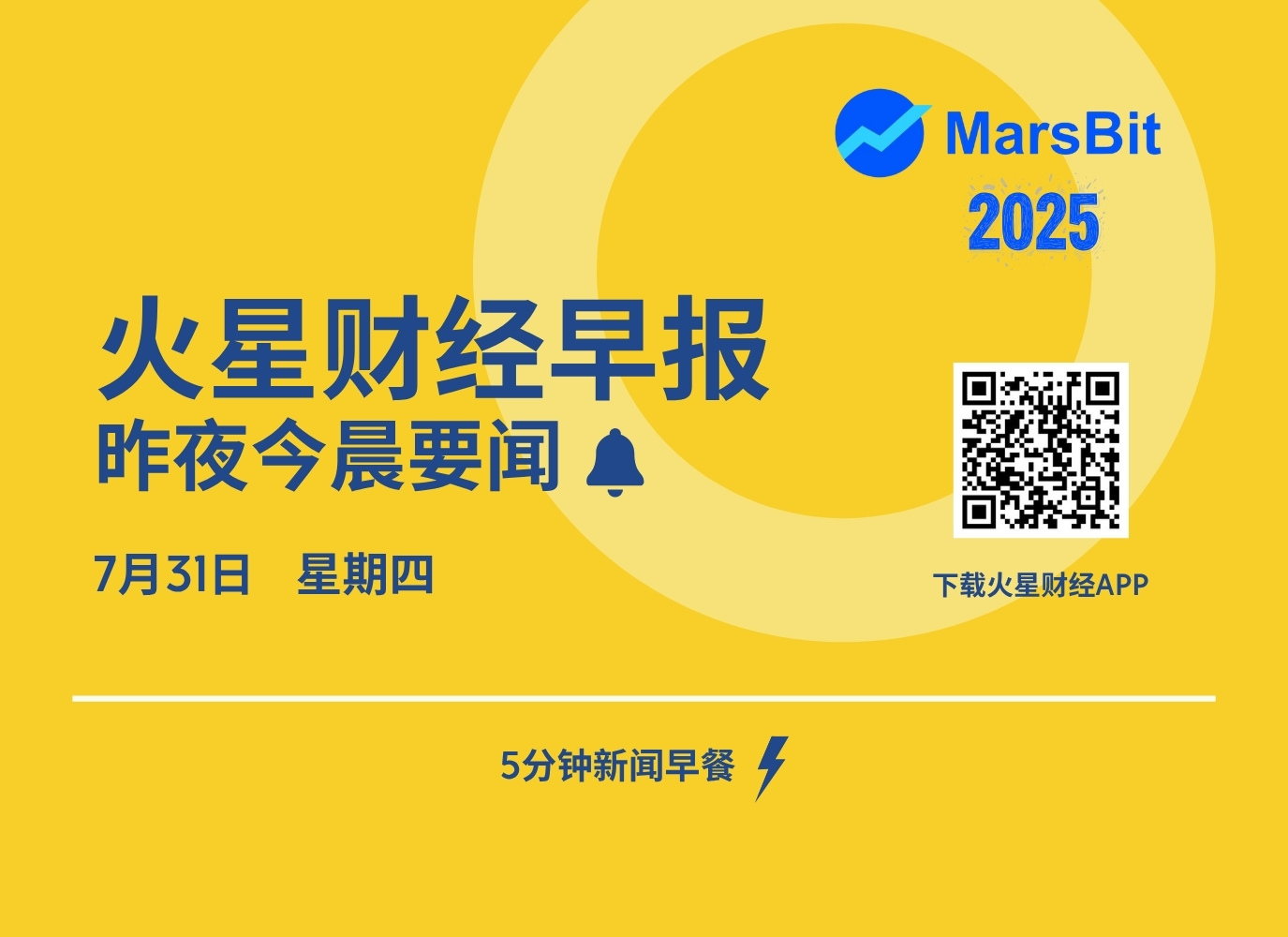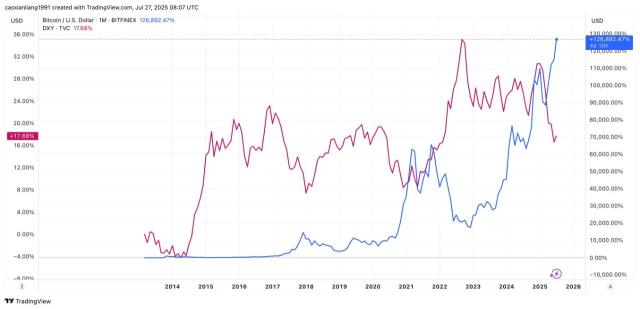 White House Crypto Report Officially Released
White House Crypto Report Officially Released
On July 31, the White House Crypto Report was officially released. From the railway connecting the East and West coasts to the internet connecting the world, every generation of American entrepreneurs has led the construction of the next generation of technology. "Crypto 3.0" should be no exception. As the authors of this report, the Working Group supports the idea that digital assets and blockchain technology can not only thoroughly revolutionize the U.S. financial system but also transform the ownership and governance structures of the entire economic system. American entrepreneurs who create new industries using these technologies should receive clear policy guidance and full recognition of their achievements. The core policy recommendations are as follows:
· U.S. citizens and businesses should have the legal right to hold digital assets and use blockchain technology without fear of being held accountable;
· Lay the foundation for building the world's deepest and most liquid U.S. digital asset market: The SEC and CFTC should immediately use their existing powers to open digital asset trading at the federal level.
· Banking regulators should not repeat the "Clamp Down Action 2.0" during the Biden era, but should embrace the opportunities brought by blockchain and digital assets;
· Support U.S. dollar stablecoins as the core of payment innovation in the digital era, helping the U.S. dollar maintain its global dominance;
· U.S. law enforcement agencies should be able to combat those using digital assets for illegal activities, but must not abuse tools to suppress law-abiding citizens, and so on.
Federal Reserve Rate Decision Has Two Board Members Voting Against, First Time in Nearly 30 Years
On July 31, the Federal Reserve maintained interest rates unchanged on Wednesday, with an unusual divergence in the decision-making process and no clear indication of when rate cuts might occur. The decision was opposed by two Trump-appointed board members, Waller and Bowman, who both believed the current monetary policy was too restrictive. This is the first time in over 30 years that two board members have cast dissenting votes. The FOMC voted 9-2 to keep the benchmark overnight rate in the 4.25%-4.50% range, remaining unchanged for the fifth consecutive meeting.
The Federal Reserve stated in its statement: "Unemployment remains low, and the job market conditions are still robust. Inflation remains slightly high." The statement also noted that economic growth "slowed somewhat" in the first half of the year, which could strengthen the rationale for a rate cut in a future meeting if this trend continues. However, the statement also emphasized that "uncertainty about the economic outlook remains high" and that both inflation and employment targets face risks. This wording reflects the Fed's reluctance to cut rates prematurely before the paths of inflation and employment become clearer.
Analyst: Powell's Stance Leans Towards Hawkish Position
On July 31, analyst Chris Anstey said that Powell stated, "There are still many, many uncertainties to resolve. Yes, we are continuously obtaining more information. But at present, we are not too close to the end of this process. Looking ahead, it feels like many things will happen." This statement tends towards a hawkish position. Federal Reserve Chairman Powell also said that he cannot make decisions based on the June forecast (dot plot) six weeks from now. His personal judgment is that the current policy is in a moderately restrictive range, though there are various different estimates.
Cboe BZX and Arca Submit New Listing Standards to SEC to Simplify Crypto ETF Approval Process
On July 31, according to The Block, Cboe BZX Exchange and Arca proposed listing standards for cryptocurrency ETFs aimed at accelerating their public trading approval process. In a document submitted to the SEC on Wednesday, Cboe BZX requested the SEC to modify a rule to "allow commodity trust shares meeting the proposed Rule 14.11(e)(4) requirements to be listed and traded generally". This rule regulates the trading and listing of commodity trust shares and sets specific requirements for certain shares to be listed on trading platforms.
Analyst: SEC Publishes New Crypto ETF Listing Standards, Coinbase Futures-Linked Tokens Likely to Be Approved First
On July 31, Bloomberg ETF senior analyst Eric Balchunas posted on social media that the SEC's cryptocurrency ETP "listing standards" have been published through new trading platform filing documents. The core conclusion is: Any token listed on Coinbase's derivatives trading platform and with futures trading continuing for more than 6 months is likely to be approved. Currently, about a dozen mainstream tokens meet the standard, consistent with previous predictions of over 85% probability. The only unresolved issue is the timing, with these ETFs potentially being approved collectively between September and October this year. For Altcoins or meme coins (such as BONK, TRUMP, etc.) without futures, they would need to rely on the Investment Company Act of 1940 path with a different product structure. Historically, regulators have been more inclined to adopt a "pure spot" ETF model based on the Securities Act of 1933. Note: The SEC has published listing standards for cryptocurrency ETPs, but most of the upcoming crypto products will adopt an ETF structure.
Bitwise Executive: Treasury Companies Solve Ethereum's Narrative Dilemma
On July 31, according to Cointelegraph, Bitwise's Chief Investment Officer Matt Hougan stated that Ethereum treasury companies and holding companies have solved Ethereum's "narrative dilemma" by packaging digital assets in a way more easily understood by traditional investors, thereby attracting more capital and accelerating its adoption. Hougan noted in an interview that Ethereum has long struggled to clearly define its revenue model for traditional financial investors until its native token Ether (ETH) was packaged into a structure similar to a "stock shell". He explained: "In the past few years, from a valuation perspective, ETH has faced a problem where Wall Street couldn't find a clear answer to its value. Is it a store of value? Is it scarcity from the burning mechanism? Is it a source of income? Or staking returns? No one could explain clearly. But if you take $1 billion of ETH and put it into a company and use it for staking, it will immediately start generating revenue. And investors are very familiar with companies that can generate revenue."
Crypto ETF's "Normandy Moment": SEC New Rules Tacitly Approve Staking Yields, Coinbase Emerges as Biggest Winner
After the Bitcoin spot ETF was approved in 2024, U.S. regulators are promoting "universal listing standards" for Altcoin ETFs, partially delegating approval rights to compliant futures exchanges. Coinbase, with its derivatives platform and staking services, becomes the biggest beneficiary and may lead the ETF process for mainstream Altcoins like Avalanche and Solana. The new rules will accelerate the integration of crypto assets into traditional finance, with Coinbase's ecosystem advantages making it a key hub connecting the two domains.
Commentary: Why Are Art Exhibitions Disappearing and Crypto Becoming a Money Laundering Tool for the Rich?
The art market is facing a shock from cryptocurrency, with traditional art transactions used by the rich for tax avoidance and money laundering gradually being replaced by more efficient crypto assets. The cancellation of the Taipei Contemporary Art Fair reflects the shrinkage of the mid-tier art market, with hot money flowing to cryptocurrencies with stronger liquidity and lower transaction costs. Previously, the wealthy used art trusts, free ports, or 1031 Exchanges for tax avoidance, but now the crypto market offers more anonymous and convenient alternatives. While the top-tier art market remains solid, the mid-tier market is being hollowed out, highlighting the survival challenges of art exhibitions. In the future, blockchain tokenization of art assets (RWA) may become a new way out, solving authenticity and liquidity issues, but the traditional art ecosystem will struggle to return to its past prosperity.
Airdrop Countdown! Linea Overturns the L2 Track: Dual Deflationary Engine Transfusing Ethereum, 9% Token Unlock Initiates "Legitimacy Voting"
The zkEVM project Linea under ConsenSys, which has been silent for two years, suddenly announced a major breakthrough: publishing a complete token economic model, confirming that 9% of tokens will be airdropped soon, and innovatively proposing an "Ethereum-first" mechanism - all gas fees are paid in ETH and partially burned, with the remaining 80% used to repurchase and burn LINEA tokens, forming a "dual deflationary" model. The project attempts to reconstruct the value relationship between L2 and L1, positioning itself as an "value amplifier" for Ethereum, but its current TVL is only $500 million, still facing challenges in ecosystem maturity.







